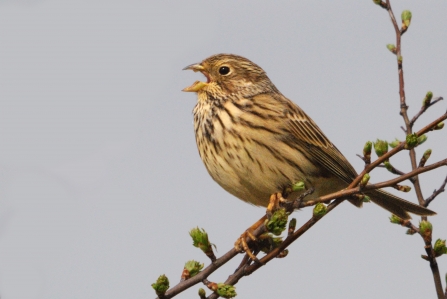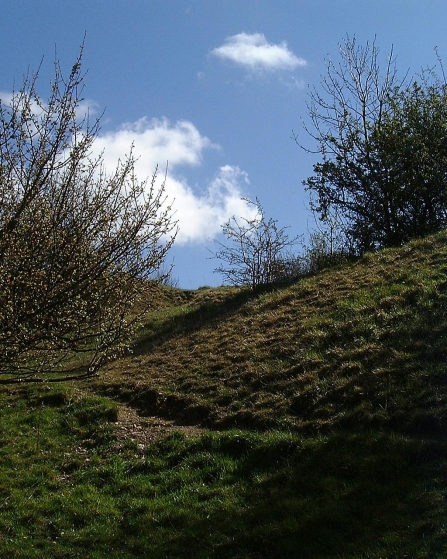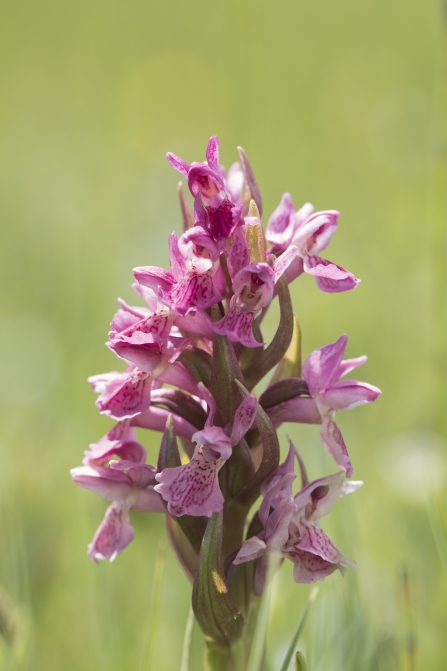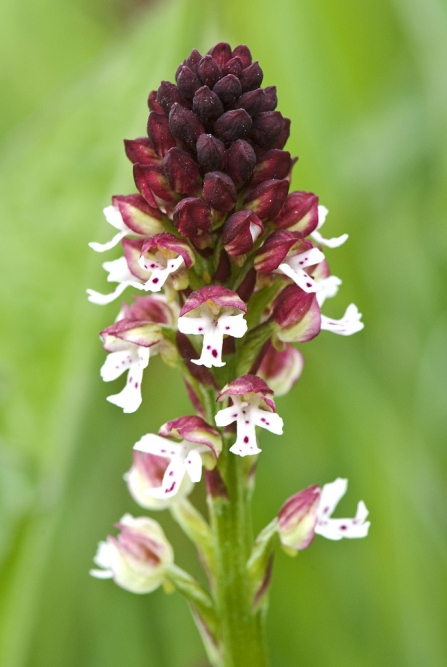Spring is that time of the year when new life comes bursting out all over which is why it’s my favourite time. It’s the time when all the summer migrant birds arrive and I look forward to listening out for each familiar voice, especially familiar voices that are not so common as they used to be and are no longer heard every year. This year has been one of the best for a while. As well as chiff chaff and willow warbler, I’ve heard wood, garden and cetti’s warblers, reed and corn buntings and even a lesser whitethroat, a species I haven’t heard for at least 10 years.
The Great Orchid Hunt
Green-winged orchid (c) GWT

Corn bunting (c) Amy Lewis
It’s also the time of year when Jenny and I go searching for orchids. Last autumn, while walking a stretch of the canal near Stroud, we found an excellent tea-room where Jen also found a book called “Orchids of the Cotswolds.” Written by a local photographer, it lists every orchid found in the county and where to find them. Here, in Gloucestershire, we’re very lucky in that the county boasts several nationally rare species, and if you’re looking for a really good haul, all on ne place, Swift’s Hill boasts over 12 species. Although the book specialises in Gloucestershire species, it doesn’t confine itself to our county. The result: this spring, we’ve been on an orchid safari.

Swift's Hill (c) GWT
There are exceptions of course, nature has an exception to everything, but as a rule of thumb, the best place to look for a rarity is a place where common species occur as well. This can be both a blessing and a curse.
Take the early marsh orchid, a species we’ve never found before and which the book said could be found in a Wiltshire Wildlife Trust reserve on the edge of the Cotswold Water park. The early marsh is a more or less purple orchid and occurs in amongst colonies of green winged orchid. The green winged is a more or less purple species and, the day we visited the reserve, they were growing in their tens of thousands. Attempting to spot the odd purple flowered orchid, that may or not be there at all, in amongst tens of thousands of other more or less purple flowered orchids is an obsessively nurdy activity! But, in a rather perverse way, it made the final discovery all the more satisfying and was accompanied by a wild yell of triumph!

early marsh orchid (c) Chris Lawrence
The following day, we were off to another Wiltshire Wildlife Trust reserve not far from Avebury. It is also a National Nature Reserve where the county flower of Wiltshire, the Burnt Tip Orchid grows in profusion. Now we have seen this one before, a single specimen, in a field on the Glos/Oxfordshire border. It is a beaut! The thought of finding them in profusion was enticement enough to take us further afield than we would normally go on an orchid hunt. It was obvious on arrival, that we had a challenge on our hands. The reserve covered an area of several square miles and there wasn’t so much as a hint of where the Burnt Tip might be found. Another obsessively nurdy search began, but this time, it ended in abject, ignominious defeat. Not only did we fail to find the Burnt Tip, we didn’t find a single orchid of any description all day! At least the sun shone, and we did see a hare, and a stoat…and an ancient megalithic tomb.

burnt tip orchid (c) Les Binns
Last October, we stayed at a delightful pub in Itchen Abbas called the Plough. It has become a favourite place of ours for a mini-break so, when we read in “Orchids of the Cotswolds” that the nationally rare Sword-Leaved Helleborine could be found in a Hampshire Wildlife Trust reserve barely 20 minutes-drive from the Plough, we were off like a shot.
Googling the site, I got the O.S. grid reference and we found the place with ease. Spotting a track heading off into the wood, Jenny said she would begin the search if I found somewhere to park the car. Having done that, I became aware that she was yelling at the top of her voice that she’d found one already! She certainly had, too. Within minutes, we had found hundreds of them.
It’s one the mysteries about wild orchids, and wildlife generally. Why, when something is found in only one or two sites in the whole country does it occur, where it occurs, in such large numbers? I have no idea. But this year has been an orchid bonanza for us, and such incredibly good fun.

